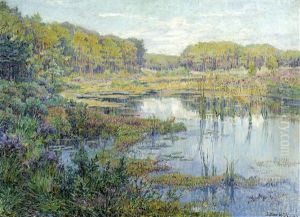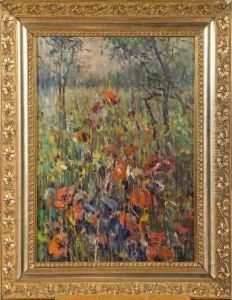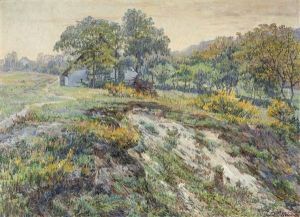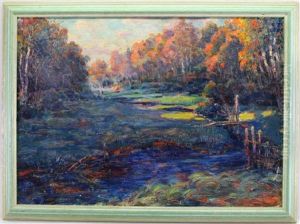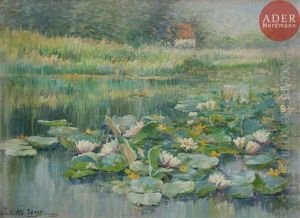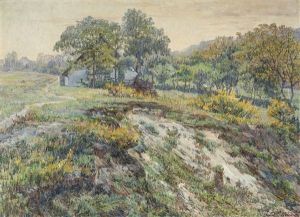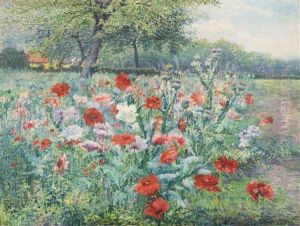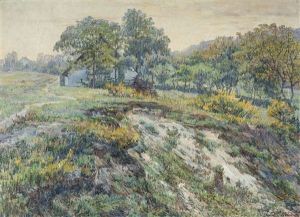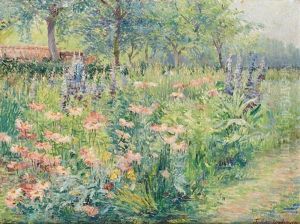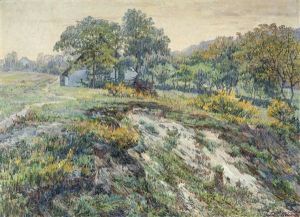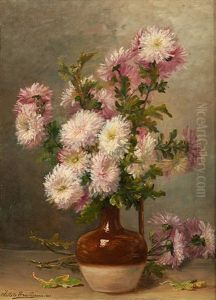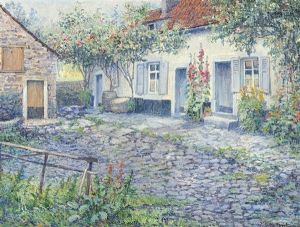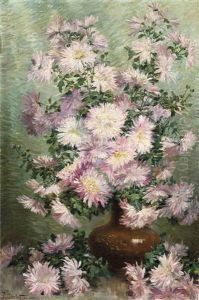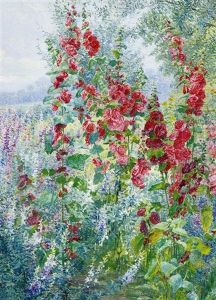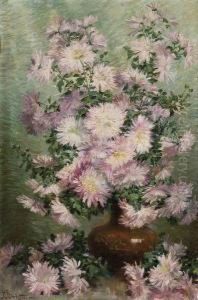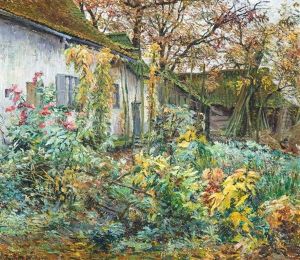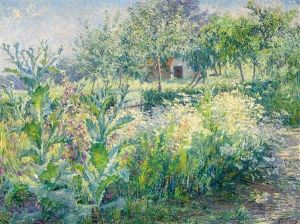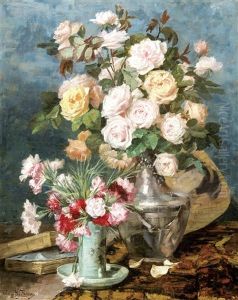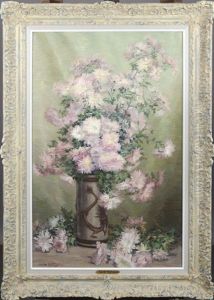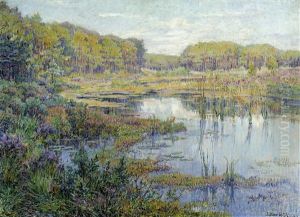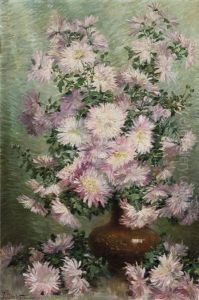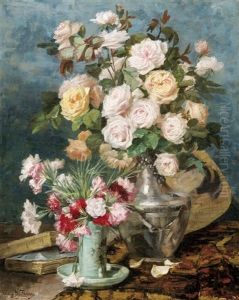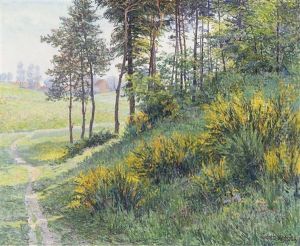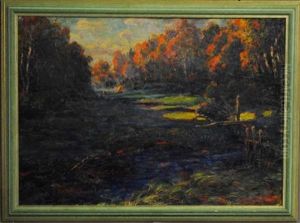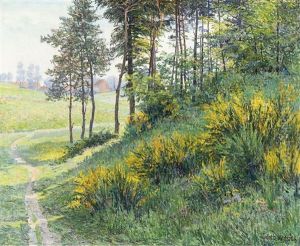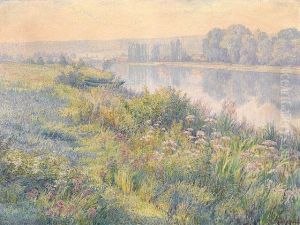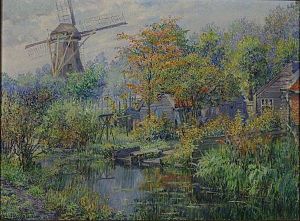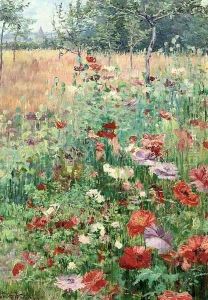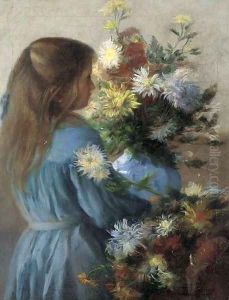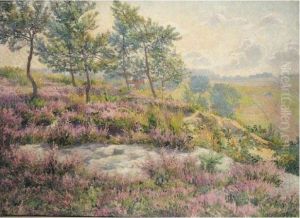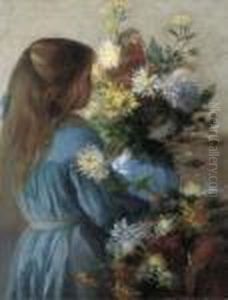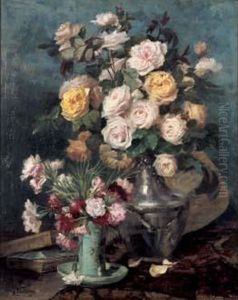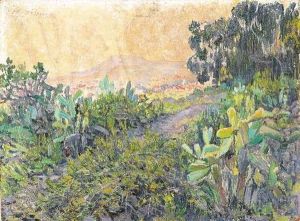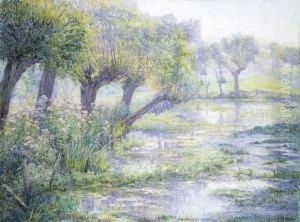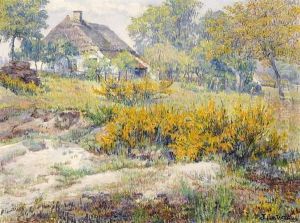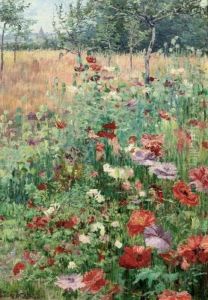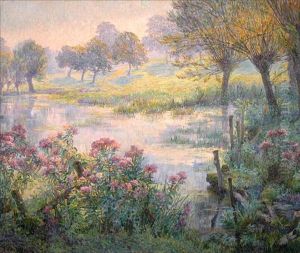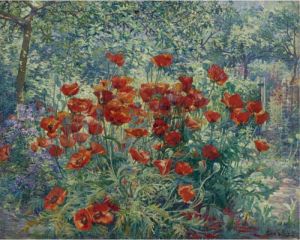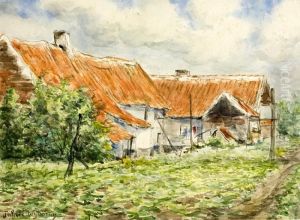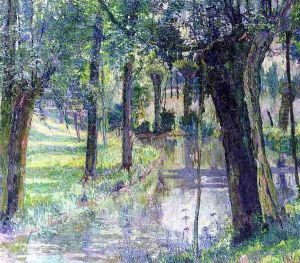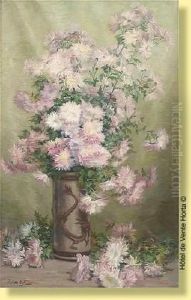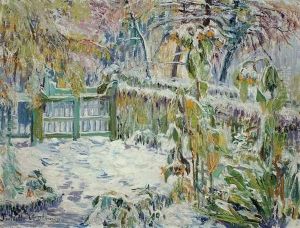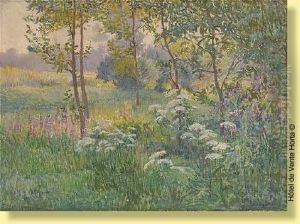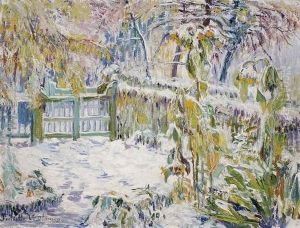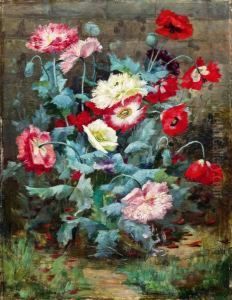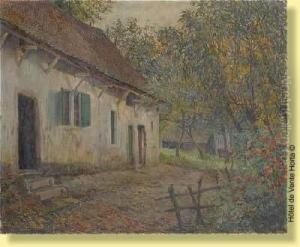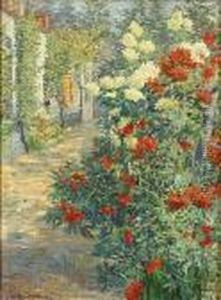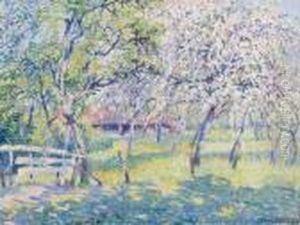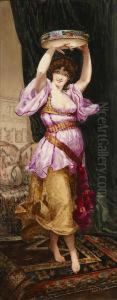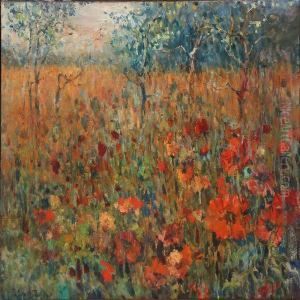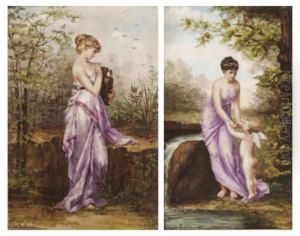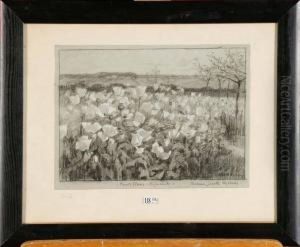Juliette Wytsman Paintings
Juliette Wytsman was a Belgian Impressionist painter known for her landscapes and garden scenes. Born Juliette Trullemans on July 14, 1866, in Brussels, Belgium, she was introduced to the arts at an early age. Wytsman demonstrated a keen interest in painting and pursued her passion at the Académie Royale des Beaux-Arts de Bruxelles, where she studied under renowned artists such as Jean-François Portaels.
In 1886, Juliette married fellow painter Rodolphe Wytsman, who had a significant influence on her artistic development. The couple became prominent figures in the Belgian Impressionist movement, often painting en plein air and capturing the subtleties of natural light. They were part of the artist group 'Les XX', a collective that sought to promote avant-garde art and ideas, rejecting the more conservative approaches of the official salons.
Juliette Wytsman's work is characterized by a delicate touch and a vivid portrayal of the changing seasons. She had a particular affinity for depicting gardens, which became her signature subject. Her paintings radiate with the gentle warmth of sunlight filtering through leaves and the vibrant colors of blooming flowers. Wytsman's approach to Impressionism was nuanced and poetic, with a focus on harmonious compositions and a soft, almost ethereal, light quality.
Throughout her career, Juliette Wytsman participated in numerous exhibitions and gained recognition for her contributions to Belgian art. She exhibited her work in various salons and galleries in Belgium and abroad, earning praise for her distinctive style and mastery of color.
Despite the challenges faced by women in the art world during her time, Wytsman managed to carve out a respected place for herself and her art. Her legacy as a significant Belgian Impressionist painter endures, with her works being held in several museum collections and continuing to be appreciated by art lovers and collectors.
Juliette Wytsman passed away on March 8, 1925, in Linkebeek, Belgium. Her body of work remains a testament to the beauty and subtlety of Impressionism and has contributed to the understanding and appreciation of this pivotal art movement within Belgian art history.
